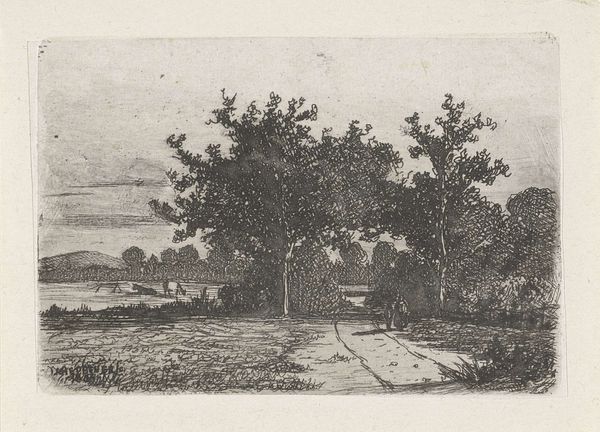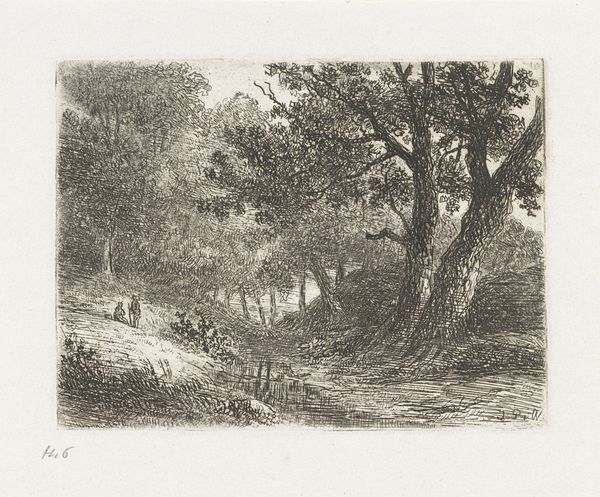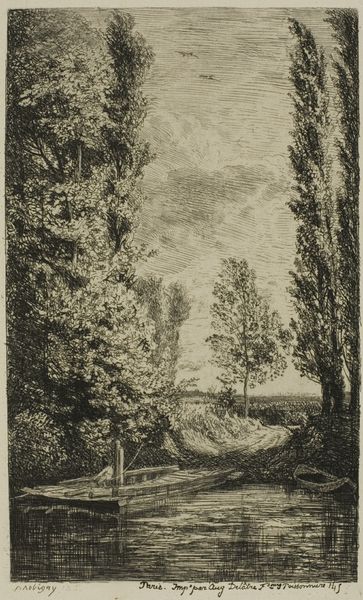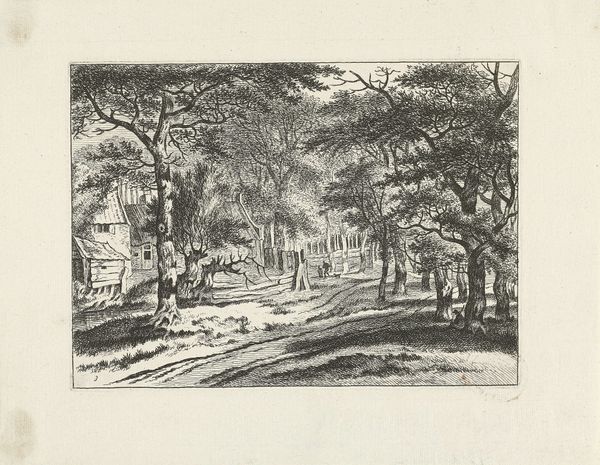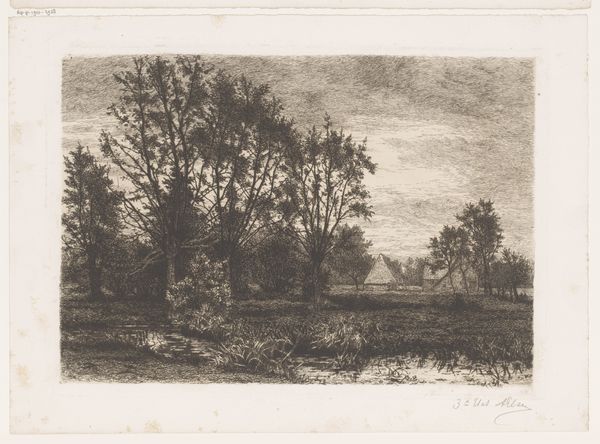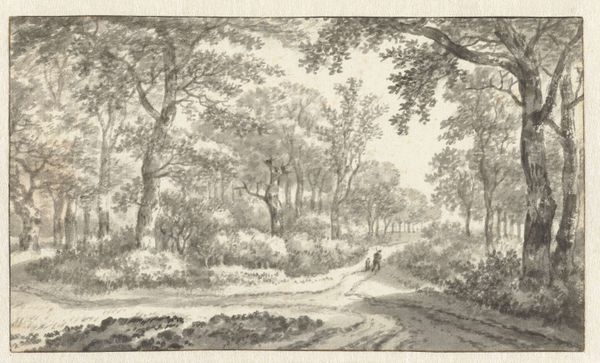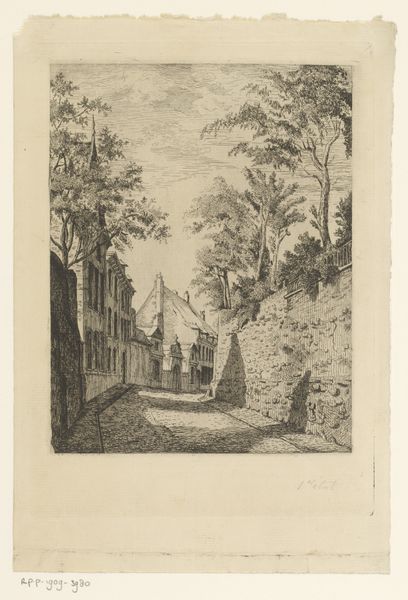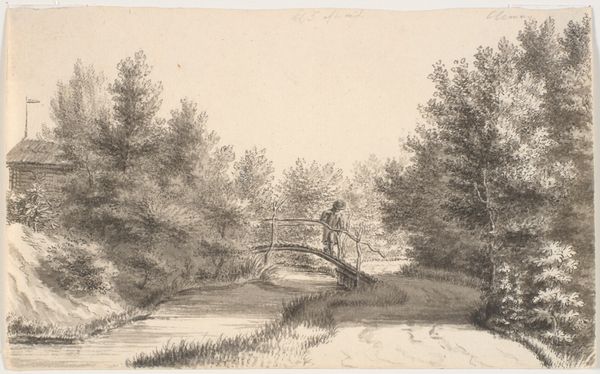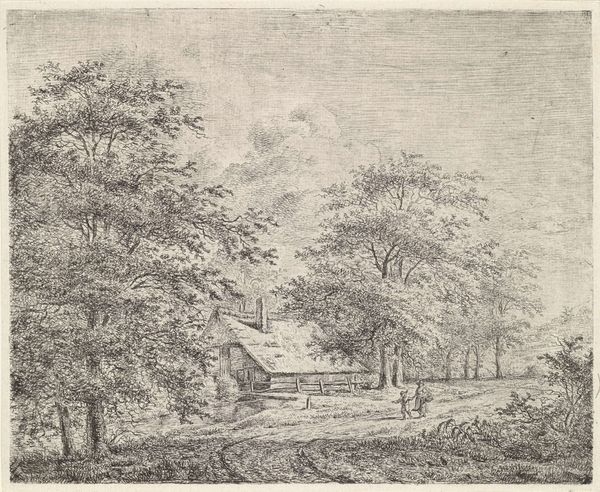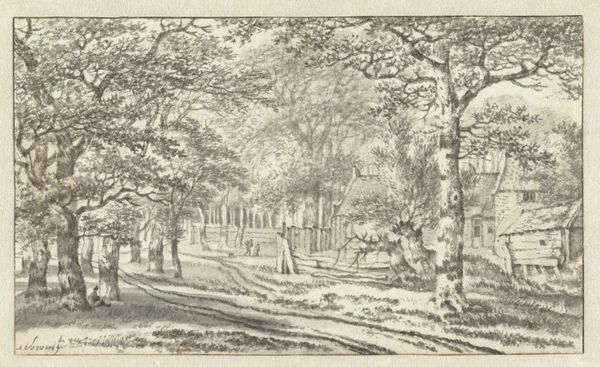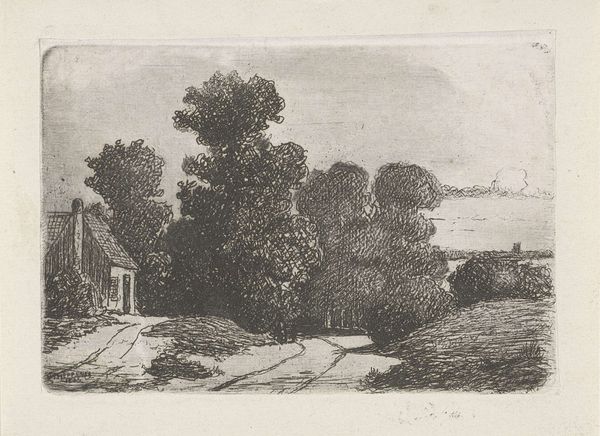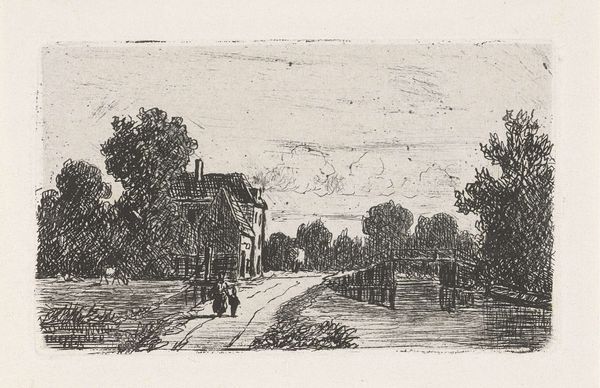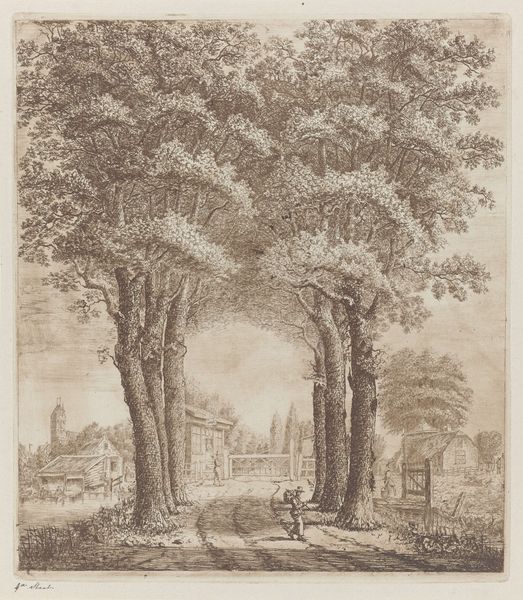
print, etching, engraving
# print
#
etching
#
old engraving style
#
landscape
#
pencil drawing
#
cityscape
#
genre-painting
#
engraving
#
realism
Dimensions: height 320 mm, width 240 mm
Copyright: Rijks Museum: Open Domain
This is Willem Oppenoorth's "Dorpsweg met huifkar," or "Village Road with Covered Wagon," made using etching, a printmaking process. The image starts as a polished copper or zinc plate, which the artist covers with a waxy, acid-resistant ground. Oppenoorth then draws through the ground with a sharp needle, exposing the metal. The plate is immersed in acid, which bites into the exposed lines, creating grooves. The longer the plate remains in the acid, the deeper the lines become. After removing the ground, ink is applied to the plate, filling the etched lines. The surface is wiped clean, and the print is made by pressing paper against the plate. Look closely, and you can see the character of the etched line itself: precise, sharp, and capable of great detail. This print embodies the traditions of both fine art and craft, offering a window into the past while reminding us of the labor and skill involved in its creation.
Comments
No comments
Be the first to comment and join the conversation on the ultimate creative platform.
